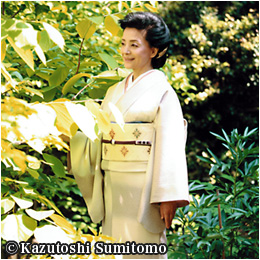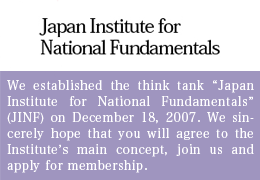Resolving East Japan’s Shortage of Doctors with New Medical College
More than two years after the Great East Japan Earthquake, there still are not many residents who have returned to their devastated hometowns. Some residents did return as promptly as they could, expecting to see their old communities rebuilt. However, many of the same people are now questioning whether they can remain, given the serious lack of necessary infrastructure. Especially alarming is the near collapse of the local medical service system.
Candidly speaking, medical services in Japan’s Pacific northeast were overstretched even before the March 2011 giant quake and subsequent tsunami. The quake made the situation much worse, with a number of hospitals and clinics sustaining crippling damage and forced to close – or at least temporarily suspend – operations. An exodus of doctors and nurses still continues today.
The lack of doctors and the collapse of medical infrastructure is one key factor preventing reconstruction of the region. It was under such pressing circumstances that the mayors of 16 Pacific coastal cities across the three affected prefectures – Iwate, Miyagi, and Fukushima ― signed a petition in late February last year, urging the government to inaugurate a medical school in the region.
Seriously concerned about the shortage of doctors, Taiichiro Meguro, 66-year-old director of the Sendai Welfare Hospital, has long advocated the establishment of a medical school in Sendai, capital of Miyagi Prefecture, aimed specifically at providing efficient regional medical care. In point of fact, Meguro had first officially proposed the idea two months before the quake. Further action has been delayed by the quake and the regime change of ruling party from the Democratic Party to the Liberal Democratic Party. Alarmed by the further deterioration of medical infrastructure following the quake, Meguro stresses afresh that it is mandatory to build a new medical school and nurture the training of more doctors.
Meguro entertains a vision of creating 100 new doctors per year, 30 of whom will receive grants under conditions obligating them to work at local hospitals for a set period of time. Their scholarships will be repaid by the hospitals that accommodate them; the funds thus recouped will be utilized to further nurture young doctors.
Born in an isolated village on the Oshika Peninsula, Akita Prefecture, Meguro firmly believes he truly owes many people for what he is today, able to make a meaningful contribution as a medical doctor. He considers the founding of the projected medical school and establishment of a solid grant/scholarship program as a form of paying back to society. For that purpose, he is arranging for the Sendai Welfare Hospital to donate the ¥20 billion (approximately US$200 million) the medical school requires.
Working as a Trio
Meguro hopes a commitment to area medicine on the part of young doctors will provide them a precious opportunity to gain rich experience, noting:
“The important thing for them first of all as young doctors assigned to local hospitals will be to work as a threesome in a team, rather than going it alone.”
At present, Jichi Medical University, built in Tochigi Prefecture, central Japan, in 1972 for the purpose of improving the level of regional medicine, dispatches a limited number of doctors to depopulated regions across Japan – usually two to three doctors per locale – leaving them alone with no senior doctors to seek counsel from. Under such circumstances, the young doctors will often be compelled to examine patients outside their area of expertise. Consequently, the doctors will be constantly plagued with uncertainty and solitude, which proves more demanding and tiring the more serious-minded the doctor. Those who aren’t that conscientious will be tempted to cut corners. Either way, they won’t last long on the job. It goes without saying that this is not a good situation for patients.
However, if three doctors work as a team, they will be able to support each other as they talk things over with each other in the same hospital. Although doctors are required to attend regular seminars, the young doctors in these local hospitals can take turns in attending such professional functions. What is even better, they can expect reasonable rest, taking a day off every third day without worry of having to respond to emergency calls.
Meguro’s plan is supported by the successful experiment undertaken by the Sendai Welfare Hospital. For many years, the hospital has dispatched young doctors to remote small hospitals in depopulated areas in Miyagi prefecture. A total of five teams, each comprising three doctors, are currently in operation away from Sendai. Explains Meguro:
“Our operations have been going very well. When I send out young doctors, I promise them I will be sure to bring them back to Sendai after working in local communities for about ten years and when they are nearing 40 years of age. After they return, I may still require them to visit hospitals in the countryside once a week or so, but for the most part they will be able to focus on their area of specialty and fully develop their skills after they have reached this age – their late thirties or early forties. They will live in Sendai, the prefectural capital, which will enable them to give their school-age children a high standard of education. I have made these promises, and I have kept them. Also, because we pay high salaries at our hospital, all of our doctors can afford great homes and many decide to settle in Sendai for good. Because junior doctors have a chance to see how their seniors work and live, they have no qualms about leaving Sendai for distant areas. As a matter of fact, they leave us behind smiling.
“Those who wish to be doctors fundamentally pursue medicine with a burning desire to help the ill. Therefore, even in depopulated areas where life is unquestionably tough, the conviction that they are actually helping the needy brings them great satisfaction. As long as we succeed in creating a framework that can effectively avoid their isolation and exhaustion – mental as well as physical – I have no doubt they will more than fully live up to our expectations.”
This system will not come into being unless steps are taken to drastically increase the number of doctors. That is why Meguro maintains that a new medical school is most urgently needed. But the plan for the medical school he envisages faces powerful opposition from two special-interest groups – the Japan Association of Medical Practitioners (JAMP), also known as the Japan Medical Association (JMA), and the Association of Japanese Medical Colleges (AJMC). Explains Meguro:
“Both these organizations raise objections, maintaining that Japan’s shortage of medical doctors is attributable primarily to a heavy concentration of doctors in metropolitan areas, and that there will soon be too many doctors, as Japan is rapidly entering a period of a sharp population decline. However, the LDP government recognized the absolute lack of medical doctors in Japan when Yoichi Masuzoe headed the Ministry of Welfare five years ago.”
The JMA has also been strongly opposed to the Trans-Pacific Partnership free trade negotiations as well as to proposals that would allow medical services above and beyond those covered by insurance to be purchased out of pocket (“two-tiered services”). One must seriously question whether the JMA is truly protecting the interests of patients or simply looking after its own vested interests. In any event, the shortage of doctors is a critical matter affecting the lives of many patients across Japan.
Humiliating Circumstances
It is the local mayors and other local officials that appear to understand the seriousness of the matter the most. As they struggle day and night, trying to improve medical services for residents, they are acutely aware of the tough conditions hospitals and clinics in their domain are faced with, unable to secure doctors and forced into suspension of – or in the worst case, termination of – services. Being politicians, however, they very cautiously deal with the JMA, as it is capable of mobilizing voters to vote against them in elections. And yet, as mentioned earlier, the mayors of 16 cities appealed to the government to open a medical college in northeastern Japan, despite strong objections from the JMA and the AJMC. Enough proof of the seriousness of the situation.
Meguro further points out:
“The Japanese medical world now faces a critical problem. Unless the level of Japanese medical schools is elevated to global standards by 2023, it will no longer be possible for Japanese medical students to qualify for the U.S. national medical licensing examination.”
This is a serious matter: in order to apply for certification by the Education Commission for Foreign Medical Graduates (ECFMG) that foreign doctors need in order to practice medicine in the US, Japanese doctors will need to have studied at medical schools that offer education on a par with the global standards that are recognized by such organizations as the World Federation of Medical Education (WFME), headquartered in Copenhagen, Denmark, or the Association of American Medical Colleges (AAMC), headquartered in Washington, D.C. To put it in practical terms, as matters stand now, our doctors wanting to practice medicine in the US won’t even be able to take the qualifying examinations.
Commenting on this humiliating situation, the AJMC stubbornly asserts: “It is not that the quality of our medical education is inferior to that of the world.” Meanwhile, Meguro expresses his desire that, if and when his plan for a medical college is approved, it will be a golden opportunity to materialize medical education of which Japan can be proud and which more than meets international standards. I see in Meguro a man sincerely committed to achieving his goal as a medical educator, determined to do his part in revitalizing his home region of northeast Japan. From the bottom of my heart, I wish him the very best in his efforts.
(Translated from “Renaissance Japan“ column no. 556 in the combined May 2-9 issue of The Weekly Shincho)









Miumiu(ミュウミュウ)…
Resolving East Japan’s Shortage of Doctors with New Medical College | Yoshiko Sakurai -official web site-…
Trackback by Miumiu(ミュウミュウ) — 2014年10月16日 12:07